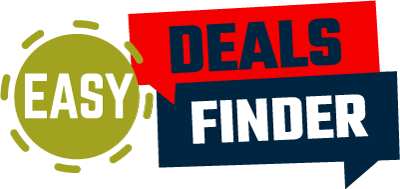Software subscriptions have become an essential part of our personal and professional lives. From productivity tools and design platforms to security software and project management apps, it seems like there’s a subscription for every task. But with annual costs creeping higher in 2025, and so many options vying for your attention, managing these subscriptions can be overwhelming and expensive.
Fortunately, there are smart strategies to get the software you need without breaking the bank. This guide reveals the ultimate hacks to save big on software subscriptions. Whether you’re an individual user, a freelancer, or a business owner, these strategies will empower you to cut costs while maximizing efficiency.
Why Software Subscription Costs Are Rising in 2025
Before we get into actionable tips, it’s important to understand why software costs are escalating. Cloud-based solutions have become the standard, offering accessibility, regular updates, and enhanced security. However, this innovation comes with a recurring cost model, which allows companies to generate steady revenue but also means customers are paying annually or monthly.
Additionally, inflation, enhanced features, and growing competition in the tech space have led developers to frequently adjust pricing. This means staying savvy about how to manage your spending has become crucial.
The Hidden Costs of Software Subscriptions

Many users unknowingly fall into traps that unnecessarily inflate their subscription budgets, such as:
- Paying for features they don’t use.
- Forgetting to cancel free trials that automatically switch to paid plans.
- Subscribing to multiple tools with overlapping functionalities.
- Missing out on discounts or special offers.
By avoiding these pitfalls and employing the strategies below, you can significantly reduce your software expenses.
Expert Tips to Save Big on Software Subscriptions
Audit Your Current Subscriptions
Start by conducting a detailed audit of your existing software subscriptions. Evaluate which tools you actively use and which ones are likely sitting idle.
Steps to audit your subscriptions effectively:
- List all active software subscriptions, including their costs and billing frequencies.
- Identify redundancies. For example, if you’re subscribed to both Google Workspace and Dropbox, determine if you can consolidate storage or collaboration tasks onto a single platform.
- Cancel subscriptions that no longer serve your needs or could be replaced with free alternatives.
Pro Tip: Use apps like Truebill or Subby to track your subscriptions in one place and ensure nothing slips through the cracks.
Leverage Free Trials Wisely
Many software companies offer free trials to new customers, allowing you to test their platform before committing. While this is a great way to try out a tool, it’s important to manage trial periods responsibly.
Best practices for free trials:
- Set calendar reminders for trial expiry dates so you can cancel before being charged.
- Don’t sign up for multiple tools at once during free trials. Give yourself time to explore and evaluate each one.
- Prioritize trials for software that genuinely fills a gap in your workflow.
Opt for Annual Plans Over Monthly Billing
Most software services offer discounted prices for yearly commitments. If you’re confident you’ll use a tool long-term, upgrading to an annual plan can yield significant savings.
For instance, a tool priced at $10 per month might offer an annual rate of $100, effectively giving you two free months. Just be sure to weigh the commitment and ensure it’s a tool you’ll use consistently.
Take Advantage of Newsletters and Social Media

Software companies often promote exclusive discounts and offers through their newsletters and social media channels. By staying connected, you can snag deals before they disappear.
Actionable Tips:
- Subscribe to newsletters from your favorite software providers to stay informed about limited-time discounts, promotions, or new features.
- Follow developers on platforms like LinkedIn, Instagram, and Twitter, where they frequently announce exclusive coupon codes, giveaways, or flash sales.
- Engage with online communities, like subreddit groups or Facebook forums for professionals in your niche, to discover additional insider discounts.
Share or Split Costs via Family or Group Plans

Many software services offer family or team plans that allow you to share benefits with multiple users at a much lower cost per person.
For instance, tools like Adobe Creative Cloud or Microsoft 365 offer multi-user packages that allow multiple logins under one subscription. Coordinate with colleagues, friends, or family members to split the cost and save money.
Stack Seasonal Deals and Coupons
Timing your subscription purchases can also help you save significantly. Many developers offer discounts during major sales seasons, such as Black Friday, Cyber Monday, or end-of-financial-year sales.
Additionally, search for coupon codes on aggregator sites or browser tools like Honey and Rakuten, which automatically apply the best discounts at checkout.
Consider Lifetime or One-Time Purchase Deals
Although most software has shifted to subscription models, some platforms still offer one-time payment options. Investing in these lifetime deals can be more cost-effective in the long run.
Platforms like AppSumo frequently list discounted lifetime deals for business and productivity software. Watching for these offers can help you lock in access without worrying about recurring fees.
Negotiate for Better Rates

Don’t underestimate the power of negotiation. Many SaaS providers are willing to offer discounts, especially if you’ve been a loyal customer or are considering canceling your plan.
How to negotiate effectively:
- Reach out to customer support with a polite inquiry about discounts or promotional pricing.
- Mention alternative platforms you’re considering and ask if they can offer any incentives to retain you as a customer.
- Highlight your long-term commitment to their service if they lower or freeze your subscription cost.
You’d be surprised at the savings you can secure just by asking.
Maximize the Power of Free Software
Finally, there’s a plethora of free software available that offers robust functionality without the price tag. Open-source platforms like LibreOffice, GIMP, or Trello provide many features comparable to their paid counterparts.
Be sure to research free alternatives before committing to expensive paid solutions. Joining tech forums or reading user reviews can help you identify reliable and feature-rich options.
Build a Sustainable Software Budget
Managing software expenses doesn’t stop after implementing the strategies above. Building a sustainable long-term approach is key to keeping costs down.
- Regularly review your subscriptions: Make it a habit to audit your tools every six months.
- Stay informed: Follow blogs, newsletters, and industry sources to learn about emerging tools that might better suit your needs.
- Encourage feedback: If you’re part of a team, actively gather input on the tools your colleagues find useful and cut out redundancies.
Take Control of Software Costs Today
With software costs climbing in 2025, taking a proactive approach to managing your subscriptions has never been more important. By auditing your subscriptions, timing your purchases, and tapping into underutilized tactics like negotiation or group plans, you’ll not only save money but also streamline your digital toolkit.



